Trans power on screen: Lars Fellows, Alex Thomas-Smith and Jordan Gray on fighting politics with culture (EXCLUSIVE)
Lights, camera, action! In the face of the government stepping away from trans allyship and the news media platforming anti-trans views, is television the last safe space for trans visibility? Jamie Windust investigates
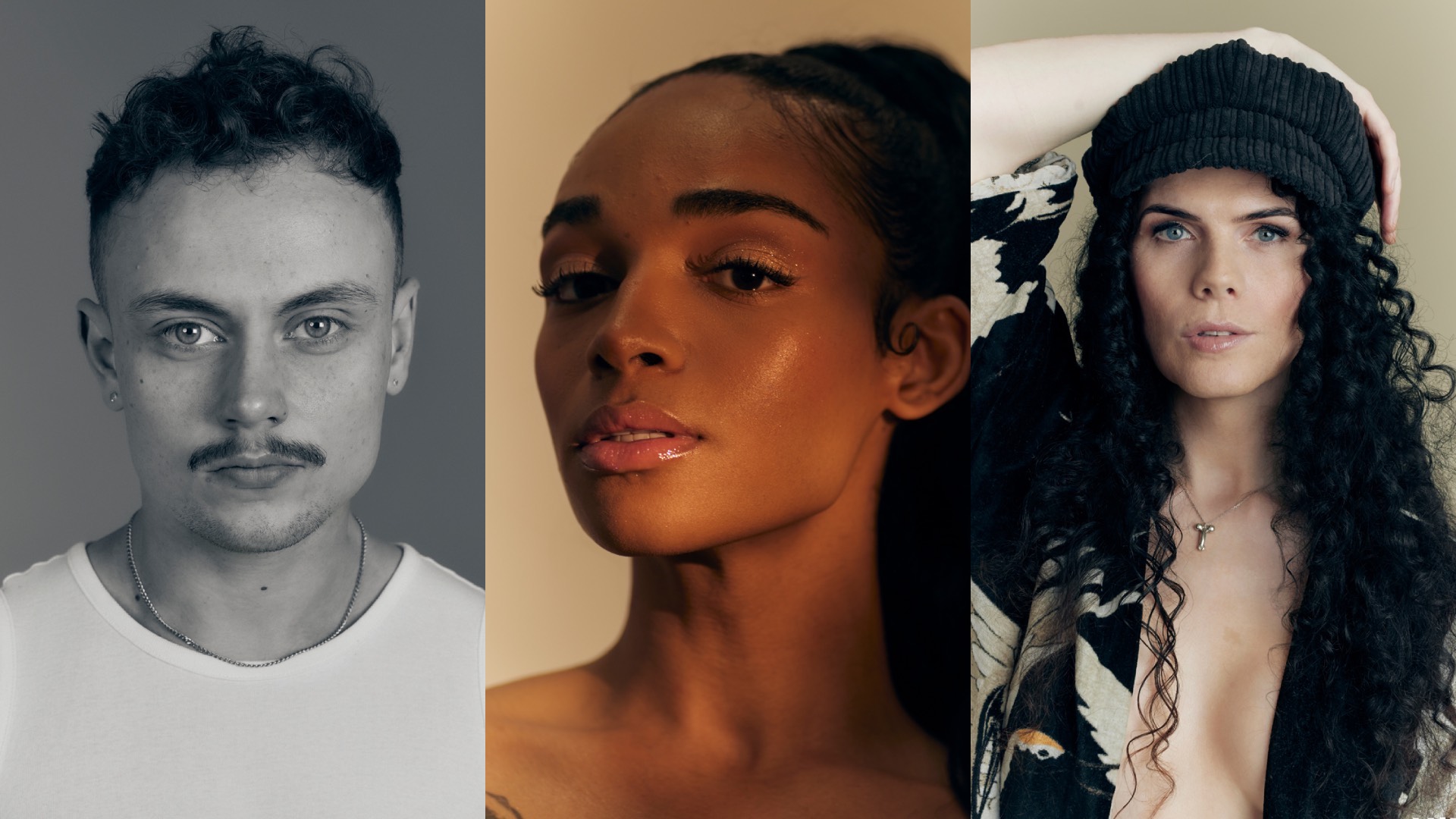
Eleven years on from the ‘transgender tipping point’ — a term coined by Time magazine when it featured Laverne Cox on its cover, and a moment of self-visualisation and representation for many a trans person — the scales still seem desperately unbalanced for trans and non-binary people. Despite the strides of progress within entertainment, socially, politically and economically, trans people have been at the mercy of an evolving and organised conservatism that has taken hold in the UK and the US. With a sense of uncompromising pride and moral certainty, both the previous Conservative and current Labour government and the Trump administration’s time in power have put trans people’s lives in the cross hairs.
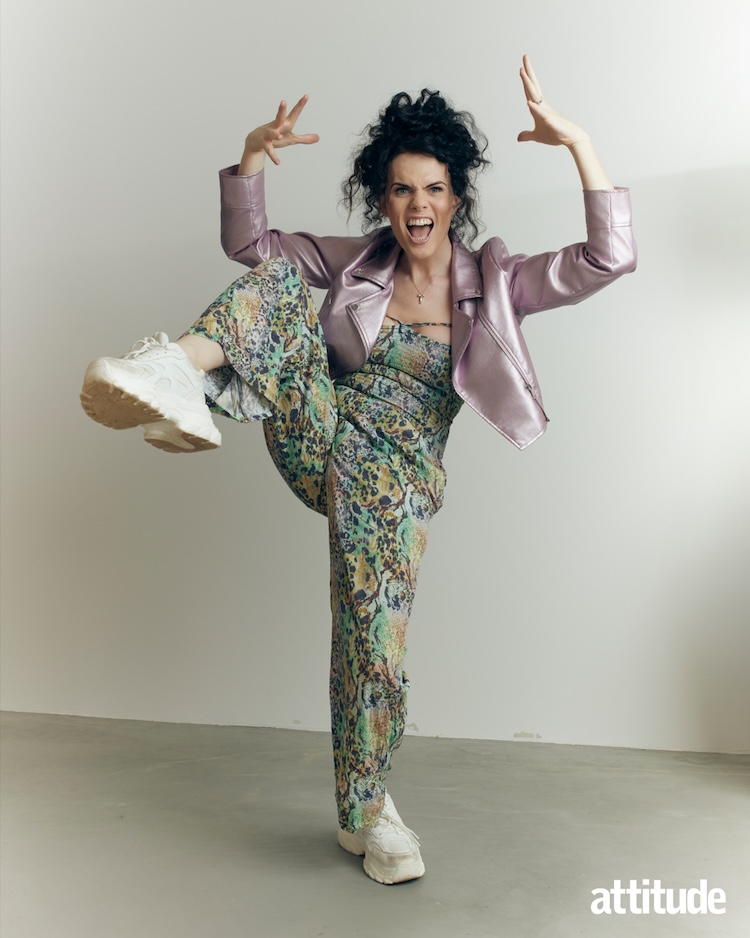
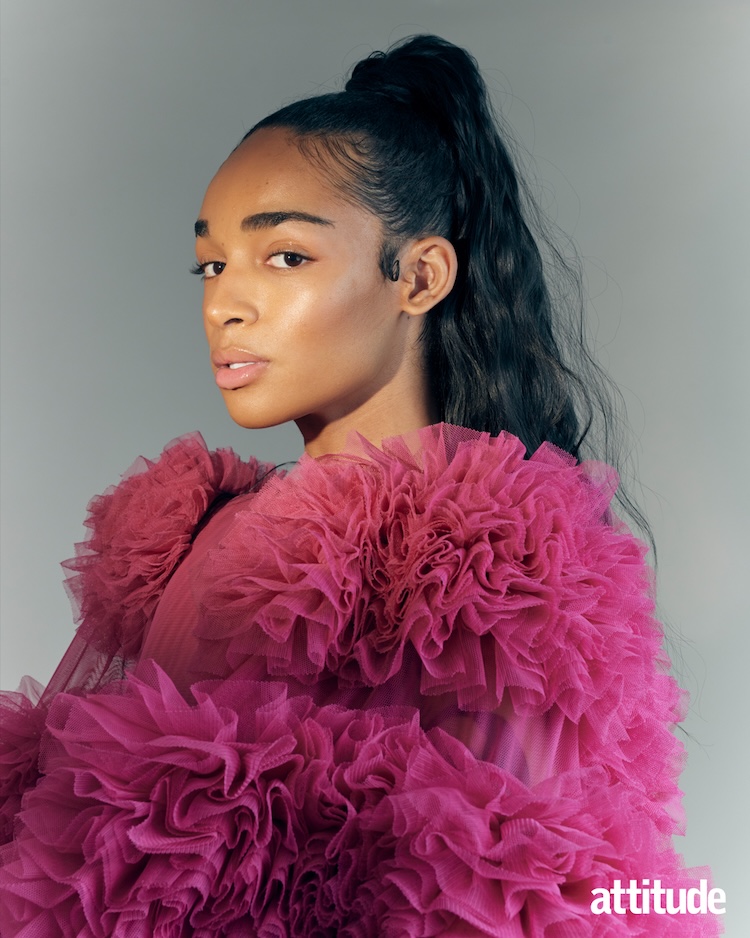
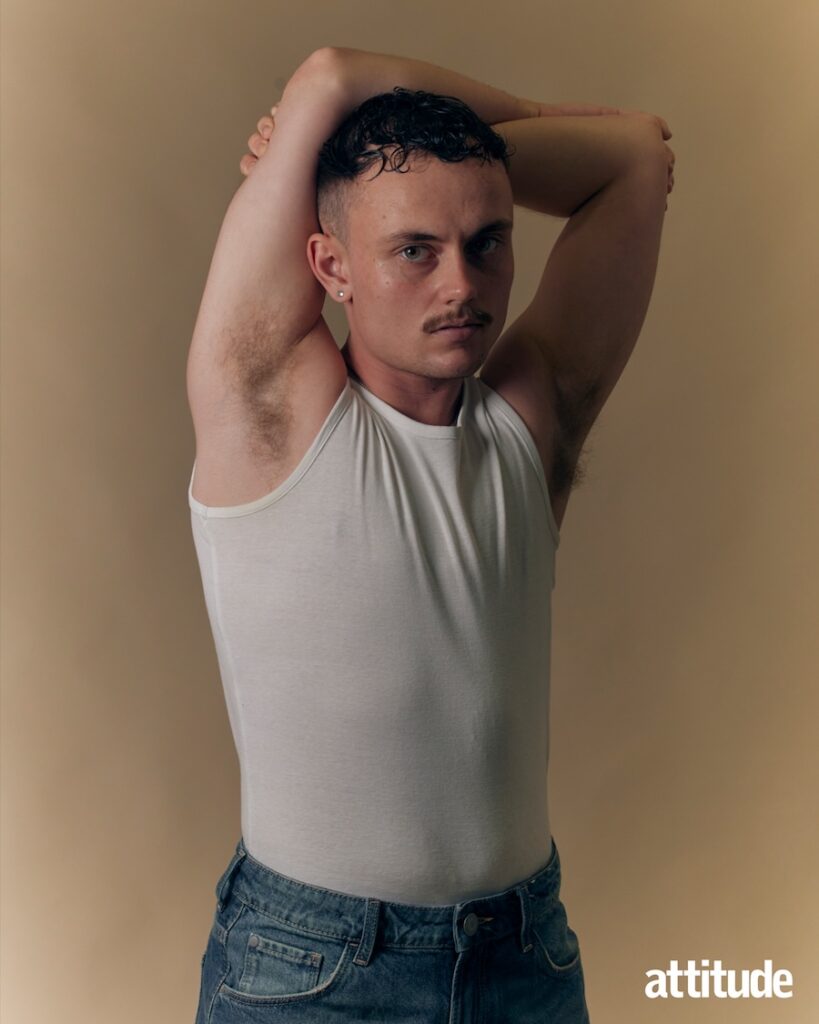
Transphobic rhetoric has risen to new heights. With the UK’s Supreme Court ruling in April identifying what a ‘biological woman’ is, alongside Trump’s executive order in the States instilling binary gender as a priority in his first 100 days, with the aim of restoring “biological truth to the Federal government”, the once small waves of gender-critical opinion are causing seismic shifts in the way gender is presented legally.
The digital and print media are to blame too. According to news outlet Novara Media and trans rights activist MimmyMum, the UK media has published an average of 154 articles on trans issues every single month since 2015. Ever since 2014’s ‘trans tipping point’, the press coverage of trans lives has increased with exponential hatred. In January 2014, the Daily Mail published seven stories on trans issues, and in 2023 that number had increased by a staggering 1,817 per cent to 115 stories in just 31 days, all critical of trans lived experiences, with that number expected to continue to rise.
Such anti-trans reporting has had a negative impact on social attitudes to trans people in the UK, with the result that they are drastically worse than they were even just three years ago. According to YouGov, the number of people who believe that you should not be able to change your gender legally in the UK has increased by 16 percentage points since 2022, to 36 per cent. Even younger folk aged 18–24, who had previously held more liberal views, have become more conservative, with only 50 per cent saying that trans people should be allowed to legally change their gender. This is down from 57 per cent three years prior. With 41 per cent of Britons stating that they have paid “a lot” or “a fair amount” of attention to the topic of transness within politics and the media, it’s clear that traditional media has a strong influence on non-trans people’s views of the community as a whole.
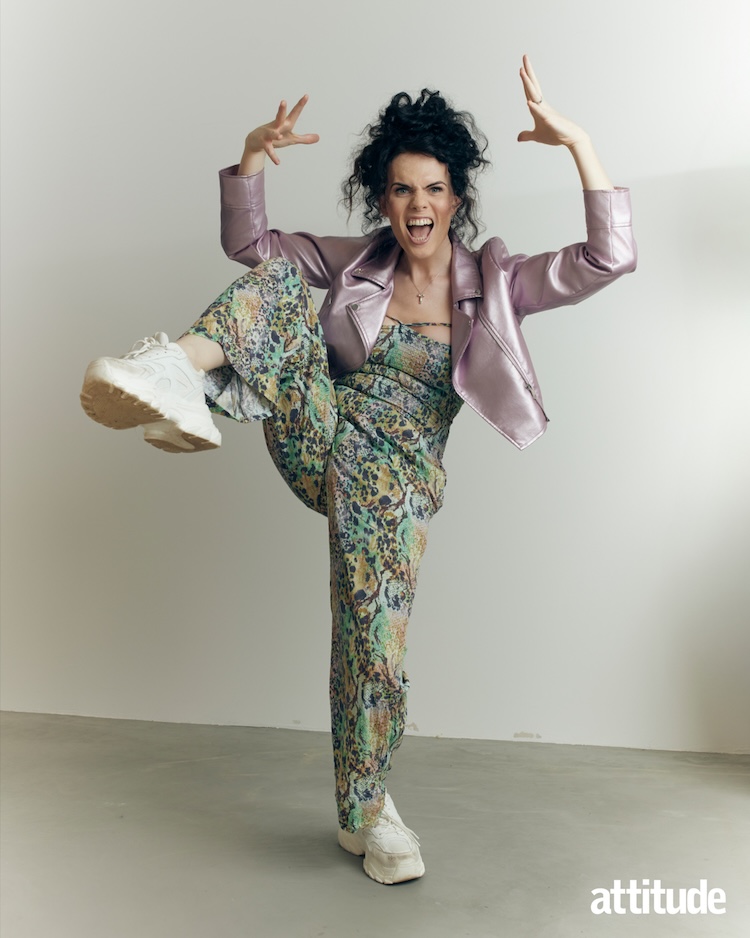
But in the entertainment industry, we have seen inclusive representation of trans and gender-diverse stories steadily increase since the 2010s. From Laverne Cox’s debut in Orange Is the New Black in 2013, to her continued work as Gail in Promising Young Woman, and earlier this year her own Prime Video comedy series Clean Slate, Cox’s personal timeline in the industry represents how, during the past decade, trans stories have moved from B plots to supporting parts to trans actors rightfully taking lead roles.
Trans actors and writers have steadily become more high-profile as their voices and faces have become known. From Ryan Murphy’s groundbreaking series Pose (2018–2021) documenting the Black trans women who paved the way for their community in 1980s New York to Yasmin Finney in the adaptation of Alice Oseman’s hit graphic novel Heartstopper, which premiered in 2022, trans stories have emerged to great success. Hunter Schafer, Hari Nef, Murray Hill and RuPaul’s Drag Race alumnus Bimini have become household names against the backdrop of great political and emotional turmoil for the community at large.
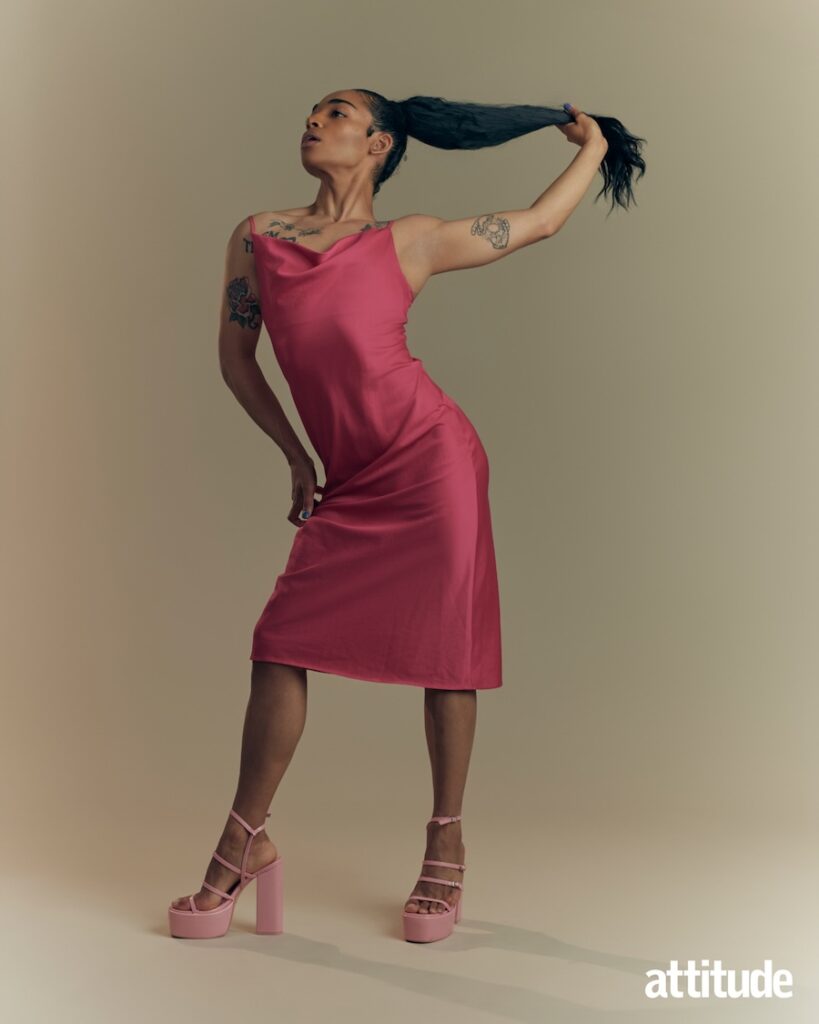
Bimini has become known globally for being unashamedly vocal on trans issues, but they report that they have witnessed the media and entertainment industry shifting at pace in a negative direction. They add that although representation has increased over the years, they have seen backward steps in the media and branded content space first-hand, and fear that there will be less on-screen representation in the future too.
For example, in contrast to previous years, they report that despite their fame they have been told that they are “too political” to collaborate with. “I was dropped from work for Pride because of my stance on trans rights and was told I was ‘too much of a political person’, which is wild because it’s Pride — and Pride is a protest,” says Bimini. “I’m lucky that I have a platform, so can you imagine what it’s like for people in other spaces? I can imagine it’s going to start getting worse.”
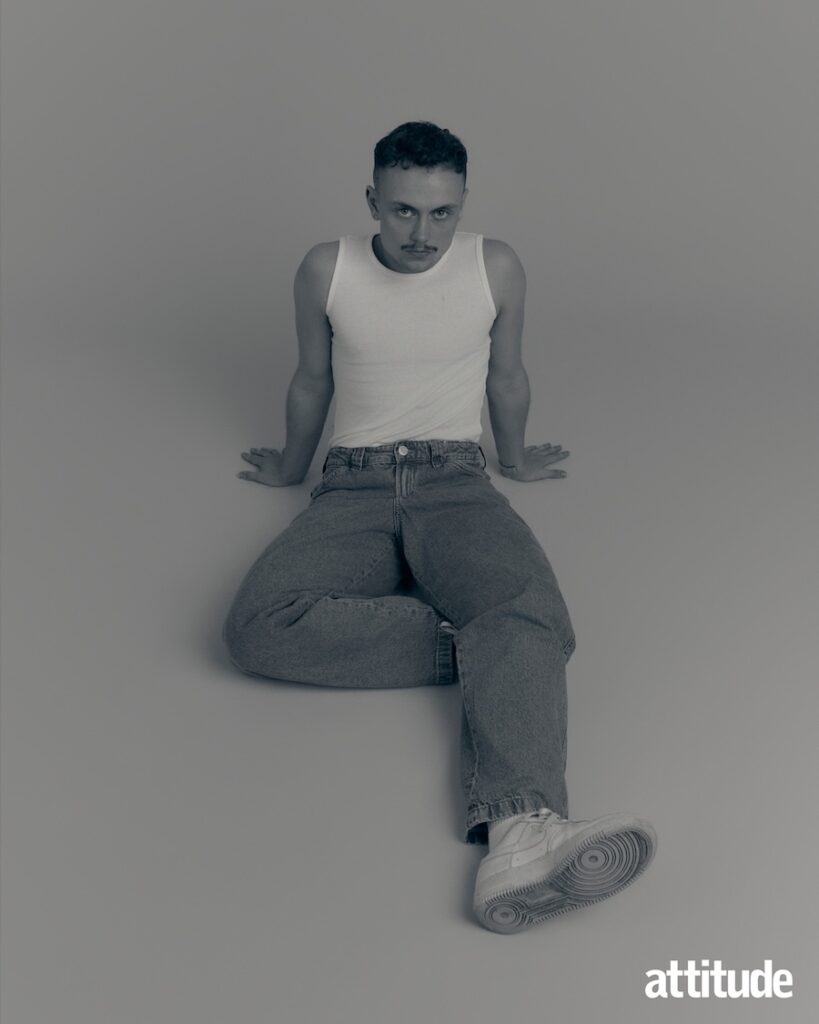
They continue: “There’s been an increase in misrepresentation in the media and we need to be able to have those honest discussions — the realistic ones — where you can see that the statistics that they’re making up about trans people being a threat are not true. It’s all propaganda, and until that happens, I think we’re going to see a rollback,” they share.
So, what’s going on? The assault on their rights, protection and privacy that trans people are living through can only be described as an act of barbarism. Is the representation just a sticking plaster, covering the far deeper and insidious threat from the conservative right? Have we got to a point where trans representation on screen is seemingly the best it’s ever been, but will now start to slide in response to hostility from other sections of society?
Attitude met with some of the UK’s most promising new and rising trans talent to find out what the world looks like for them in the public eye, and to ask what they think of the world of representation politics. Are they happy to be in the spotlight, or do they think that the entertainment industry is only a few small steps away from closing its doors to trans stories altogether?
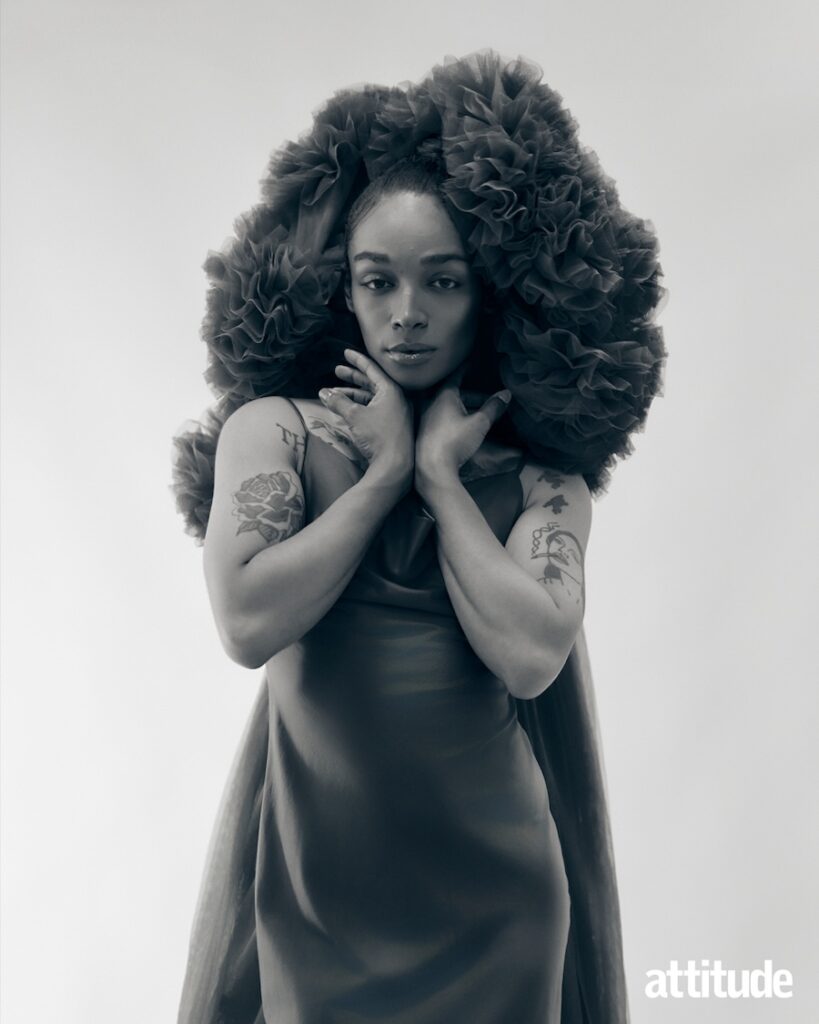
Alex Thomas-Smith
Many of us were first introduced to Alex Thomas-Smith with their starring role as May in the West End production of jukebox musical & Juliet. Just looking at them, you knew that glamour was integral to their DNA as a trans femme non-binary person. Sitting down with them to speak about their role as Sticky Nikki in Paris Lee’s raucous and adventurous new BBC drama What It Feels Like for a Girl, it feels like a lot has changed since we saw them singing and dancing on the West End stage — there’s a sense of confidence that only comes as a byproduct of living in the comfort of authenticity.
They say that their personal identity is a powerful tool when it comes to embodying new characters, especially when they’re trans. “It’s so interesting because I feel like, as actors, we have so many layers to us, and I feel like sometimes the way I approach a role, sometimes you can go towards the character, and sometimes you can bring the character towards you.” They continue, outlining their process for roles that don’t reflect their own experience: “If I was playing someone whose background was completely different to me or their social class, I would probably have to build the character from the outside in,” they say.
But growing up, the expansive and gender-affirming roles that Thomas-Smith, now in their twenties, gets to embody now were few and far between, and when it came to seeing themselves on screen they didn’t feel represented, not just as someone questioning the gender binary, but as a young Black person too. “I was just looking for any person of colour in the media, and I did feel like we were represented a little, but it was very much characters who were the sidekick — or we would be pigeonholed into very specific roles,” they say.
Much like their co-star Ellis Howard, who plays Byron in What It Feels Like for a Girl, Thomas-Smith opines that reality TV of the 2000s captured transness in a way that, for the time, was groundbreaking. “When I saw Nadia on Big Brother, that was a huge revelation for me,” they share, referencing Nadia Almada, who won the show back in 2004. “Seeing these trans people in media was so huge and ground-breaking, and I know at the time they were not met with the best reception, but as a child, I was like, ‘Oh my God, there’s a whole world out there that aligns with me so deeply.’”
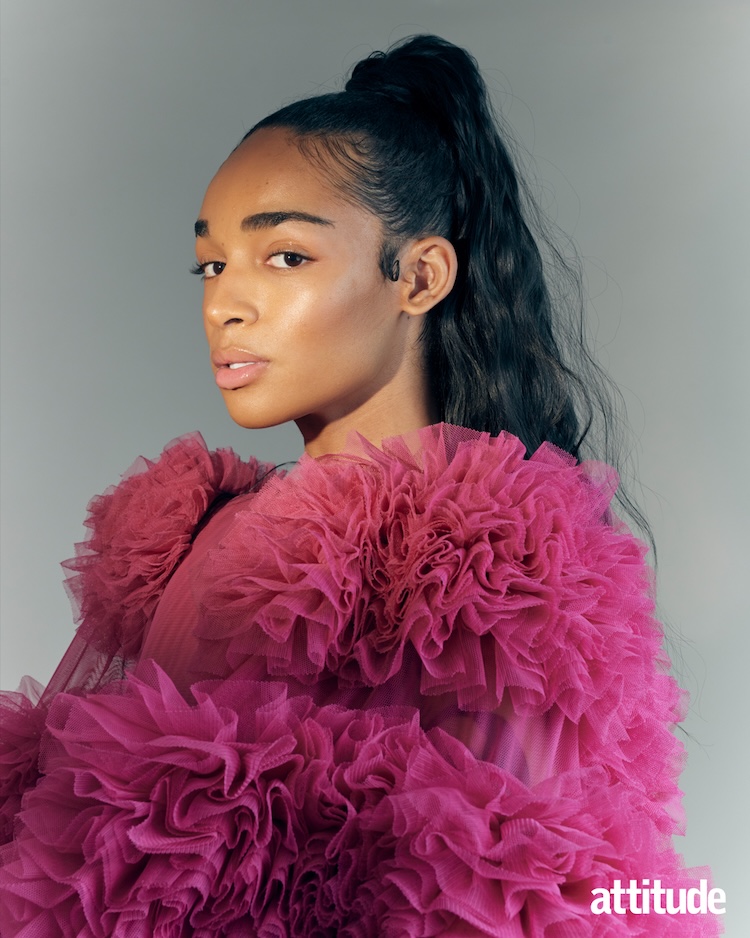
With Thomas-Smith’s role in What It Feels Like for a Girl, as well as their upcoming turn in Lena Dunham’s Netflix series Too Much, it’s clear that by bringing themselves into the part and knowing what it is they wanted to see on TV as a young person, they’ve created a character only they can play. “If you add in that character, being trans or gender non-conforming, for example, it’s an extra layer that [I] don’t need to fabricate because I’ve already lived it. Of course, every role requires work, but you can’t teach a lived experience and that changes the way I interpret every role.”
Despite Thomas-Smith’s expertise and courage in bringing their full selves to the world of work on stage and on screen, representation of trans characters in TV has fallen for the second year in a row. Last year, GLAAD reported in their Where We Are On TV report that during 2023–2024, a total of 468 lesbian, gay, bisexual, transgender or non-binary characters were shown on screen across scripted broadcast, cable and streaming platforms. The number of trans characters totalled 24. Down from 32 in the previous year, this is the lowest since 2017–2018. This represents just 5 per cent of the total amount of LGBTQ+ characters shown on our screens. Within that, eight of those were non-binary and just five were Black.
It’s a similar picture on the silver screen. The 2025 GLAAD Studio Responsibility Index, which tracks LGBTQ+ representation in film, found that across the past 12 months, out of 250 films from studios such as A24, Netflix, Lionsgate and Sony Pictures Entertainment, only 59 contained LGBTQ+ characters. More shockingly, only two films featured trans characters, with a grand total of only three trans characters out of the 181 LGBTQ+ characters identified from the 250 films analysed. It’s disappointing that this is an increase on the previous year when there were only two.
So, despite the noise made by both the conservative and liberal media about trans castings in shows, the reality of the statistics shows us that trans people on screen are just a small drop in the ocean.
Despite their personal success and confidence, Thomas-Smith knows how impactful anti-trans rhetoric can be, and doesn’t see the media industry being impervious to this. “Our freedom [as trans people] is so fragile, and I definitely feel that we’re only one step away from not being represented at all in the media. It’s dangerous to sit back and say ‘We’ve got this show’ or ‘We’ve got that show’ because if you look at TV as a whole, there will be a hundred shows without a queer person or a trans person in them. Representation is something that’s still on a knife edge.”
As shows and commissioners put their heads above the parapet, it’s clear that the sense of community on screen and behind the scenes is vital for performers like Thomas-Smith to not only enjoy the work that they’re doing, but to cherish the experience of being able to be the representation for thousands who will watch and feel seen.
As What It Feels Like for a Girl’s rawness continues to garner yet more five-star reviews, it’s clear Thomas-Smith and fellow stars Ellis Howard, Laquarn Lewis (Lady Die) and Hannah Jones (Sasha) have continued their deeply valuable connection post filming. Howard identifies as queer and cisgender, Lewis identifies as gay and cisgender, and Jones is a trans woman. There’s a sense that this group are acting as the representation that they all so desperately wanted to see growing up as trans and gender-diverse people, and there’s a deep beauty in that.
“With What It Feels Like for a Girl, we’re in a group chat, and we speak every day,” says Thomas-Smith. “We were up until midnight last night just cackling away and this morning, and it’s just like we’re really sisters. I think that we just have an understanding of life that is so specific to our community and it’s just so joyous, so fun, so liberating and so effortless.”
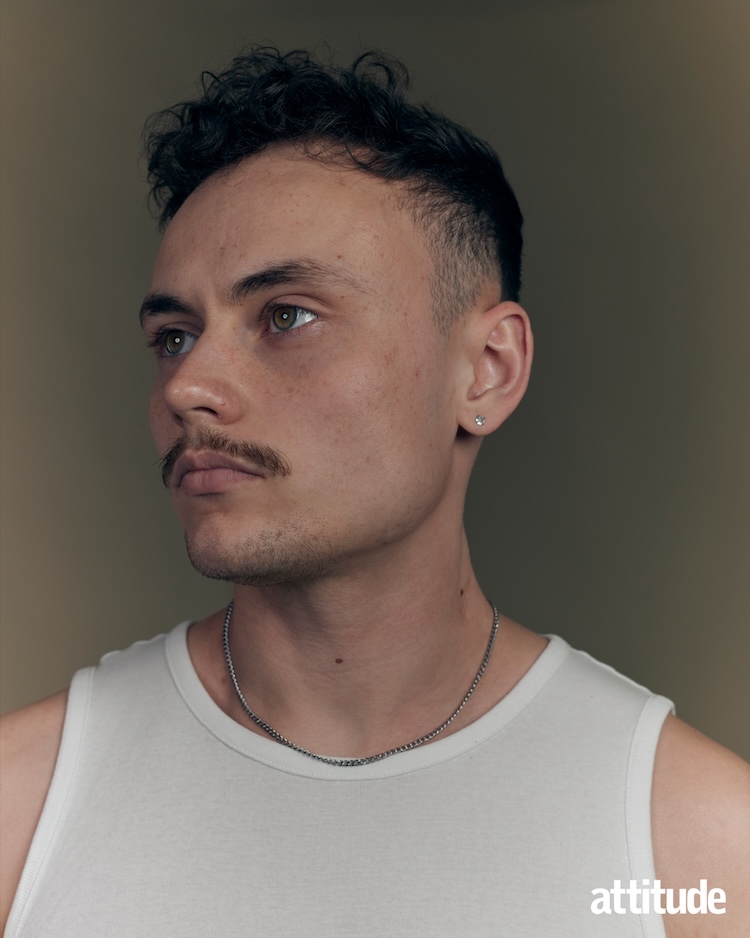
Lars Fellows
For Lars Fellows, the first trans man to appear on I Kissed a Boy, his foray into the public sphere is unique, and for many offers hope that representation of trans people is something that can exist in real life and not just fiction. After starring on the most recent series, Fellows’ cheeky grin and ability to not take himself too seriously has been an instant hit with audiences.
His heartfelt moments on the show offered an insight into not only his world as a trans man, but also the unequivocal support the queer community showed him after he came out to the group. But it was daunting for Fellows before the show aired, knowing eyes were going to fall on him. “It was scary because I was just going in as myself and I wasn’t playing a character or a role,” he shares as we sit down to discuss the show’s impact and what ‘being the representation’ feels like since the show was broadcast. “I thought [me being on the show] could be really powerful, and I didn’t want to deny myself that experience just because I’m trans. I wanted to push myself out of my comfort zone because I am really putting myself out there for debate and conversation,” he says.
It’s no surprise that Fellows was fearful of appearing on such a popular show as a proud gay trans man. But the sense of fear and worry that he held was eclipsed by his desire to explore his own sexuality and intimacy with other gay men, especially since he didn’t see a lot of his own experience reflected in the media when he was coming of age.

“I didn’t really see a lot of representation growing up, and it was me just having to scour the internet to find anything that remotely related to my experience,” he shares, citing people like Elliot Page and RuPaul’s Drag Race’s GottMik as people he recognised as prominent trans men. “It was barely anything, so my path was more via YouTube, and trying to connect with people online. Really, there was nothing mainstream.”
Speaking to Fellows makes me feel a sense of protectiveness over not just him, but what he represents. His route to I Kissed a Boy, and talking to Attitude for this interview, was one born out of two deeply human desires: to connect with other like-minded people, and to find out what his sense of sexuality and desire looks like. It’s not just simply about what it’s like to be a trans man — it’s more than that. His passion and drive in not just showing up for himself, but to represent his community in a three-dimensional, fleshed-out way is what is so brilliant about TV, and why he believes representation of trans people will continue beyond I Kissed a Boy’s release. It allows us to showcase the many sides of people that we don’t always get to see. In the process, it connects to people at home who yearn to see themselves represented, creating a sense of unbreakable community through the screen.
However, the highs of TV stardom and being able to connect with people directly in their living rooms can also have consequences that put transness under the microscope, and its subjects in danger.
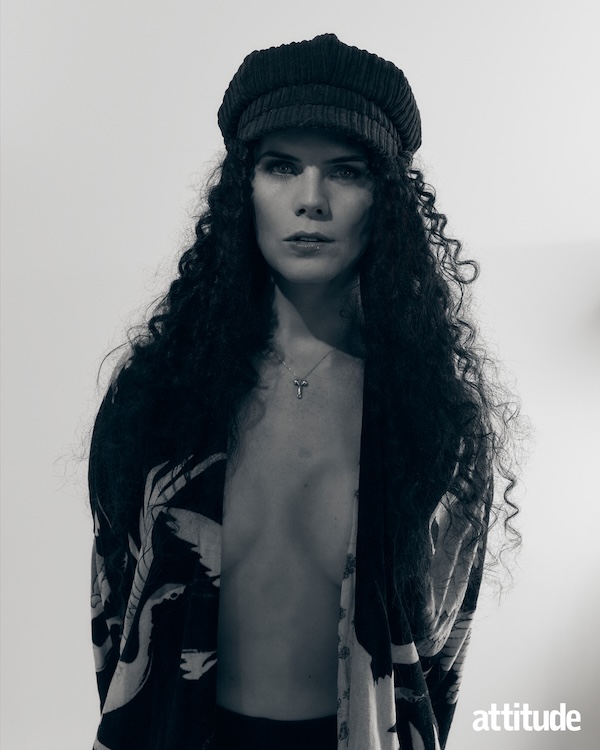
Jordan Gray
Many will know Jordan Gray from her hit comedy show Jordan Gray: Is It a Bird?, which saw her become the first trans woman to headline at The London Palladium. She has become known for having her tongue firmly pressed in her cheek. Gray’s world changed astronomically after she appeared on Friday Night Live in 2022, a one-off show celebrating 40 years of Channel 4. During her performance at the piano, Gray stripped naked and played the instrument with her penis (she was later rewarded with a BAFTA).
“I guess [my performance on Friday Night Live] was disruptive,” she reflects. “I do kind of want to point out that, as I know, you know, because the news was so weighted, it made it seem like it was this massive, crazy thing. It was, but a majority of people either just liked it or didn’t see it. It was a small group of people that were violently opposed to it, and I do mean violently, hence the premise of the new stage show. Their reaction was a moral reaction.”
Almost immediately, the comedian was being talked about in ways she’d not experienced before. As a storyteller, a comedian and a musician, her work puts her experiences as a trans woman at the forefront. But this time, rather than her work being the focus of the story, it was her body — and its presence on the television — that prompted outrage.
Despite that one headline-grabbing performance catapulting her and her show into the zeitgeist, the backdrop was punctuated by transphobia. Speaking with Gray, it’s clear she’s aware of the imbalance that trans creatives face when it comes to affirmation in the public eye. “What happens is we have conflated exposure with success, and when people are on their way up as little baby performers, we don’t know the difference between a lot of people seeing us and people having a genuine interest in our artistic career.”
Gray’s awareness of what’s going on politically is at the forefront of how she’s navigating her work. “A few of us [trans comedians] have to pop up and be really loud, but not too loud … I don’t have any fight in me. What I have is an ability to de-escalate and to be silly and vulnerable. I walk around with an open wound all of the time and I struggle, especially at the moment, to be diplomatic when the rhetoric is so violent.”
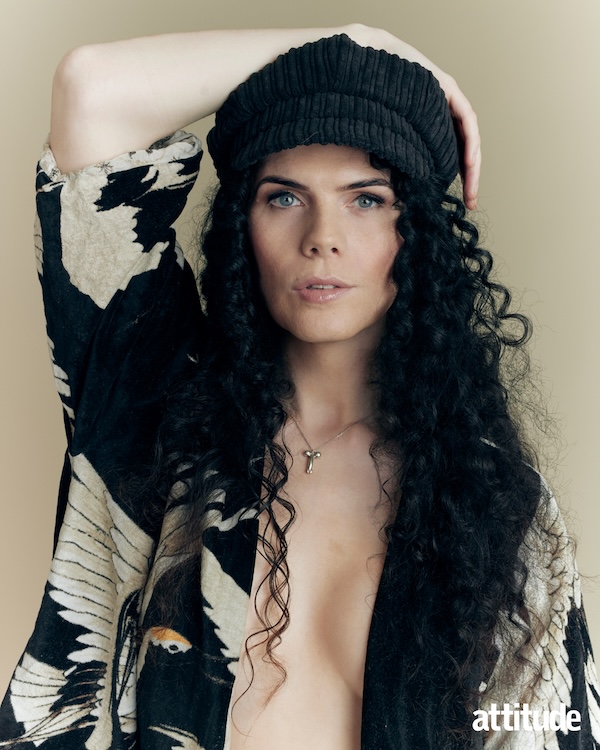
It’s refreshing to see someone as creative and earnestly funny as Gray showcase the reality behind the pun-filled sets she performs without compromising her creativity. Seeing her at Soho Theatre ahead of her run at this year’s Edinburgh Fringe with her new show Is That A Cock In Your Pocket, Or Are You Just Here To Kill Me?, it’s clear that she’s striking a new, perhaps more emotional balance in the work she’s sharing with the world.
Gray is also the star of six-part ITV comedy series Transaction, with actor Nick Frost. With the Supreme Court ruling still leaving a trail of upset for the trans community, she shares her reaction to the decision and why creating moments of representation like she is with Transaction is something she doesn’t see slipping away. “These rulings don’t make any sense. Good people like to feel smart, and the ruling is not that — it’s very stupid. So, to be opposed to it makes you feel like you are aware that you’re falling on the right side of history.”
From Gray’s perspective, the outlook is positive. “People seem very proud to be commissioning work by transgender and non-binary people. I’m as transgender as a person can get and I talk about it all the time, but [throughout history] you’d have gay icons that were quite obviously gay but never mentioned it on the television, but it was still a comforting, warm presence to see them on the TV.”
Gray’s point also speaks to the representation that often goes unseen. Trans performers, actors (and in her case security and front-of-house teams at her stage show and talent below the line on Transaction) are on the increase, everywhere. They might just not always be in the spotlight. Despite justifiable concerns as identified by Gray and Thomas-Smith that representation could decline on screen in years to come, the growing representation in talent behind the scenes in writing rooms, editing, catering, cleaning and beyond provides reasons to be optimistic.
It’s a reminder that the spotlight isn’t the only space that people look to feel seen. “We pushed very hard to have the behind-the-scenes talent be transgender and gender non-conforming people,” says Gray. “There’s a lot more people making a TV show than just the five people on the screen … the main thing is to get into the writer’s rooms and, as below-the-line talent, behind the cameras. I’ve met some bloody amazing transgender caterers, and I’d like them to be everywhere! These are the people that are actually making the projects happen.”
It’s clear for all three of our interviewees that the dichotomy of increased creative opportunity and political ostracisation is not only unethical, but it pulls at the very fabric of their sense of self, even when those fibres are strong. It’s a narrative that trans people have been shouting about with increasing volume since 2014 — that they are valid, they exist and they deserve to be loved and seen for who they are, and an undeniable propeller of that message is in the way the media allows them to represent themselves.
Through shows like I Kissed a Boy and What It Feels Like for a Girl, we get to see trans and queer people in the driving seat, putting their stories into the mainstream with an informed touch. It defies the critics who say that trans people are a fad or a trend, and cements their stories into the annals of TV history. Gray too exemplifies the resilience and humanity that comes with telling your own story in a world that consistently wants to shut it down, to silence it and claim it’s false. She represents a future where trans stories are loose and funny, and vivid and silly. Something trans people need now more than ever.
So, what will representation look like in 2035? Will there be more trans people on our screens? How will politics have influenced the way we are seen in the world? We’d all love a neat answer to these questions, but if the past decade has shown us anything, it’s that trans stories contain a potency that pushes past political denial or social exclusion. They push through the cracks in the pavement because they’re not merely stories that should be told — they’re stories that will be seen, no matter what.
Amid the backlash and attempts to block trans narratives from being heard, it’s on us as a community to continue to create space for trans stories to be told, because all LGBTQ+ people can relate to being unheard and dismissed for being different. It wasn’t long ago when gay representation was few and far between, from controversial same-sex kisses on prime-time soap operas to that rimming scene in Queer as Folk. We owe it to our trans siblings to fight for them in their darkest hour, because their existence fuels creativity and hope unlike any other community on earth.
This feature is taken from issue 365 of Attitude magazine, available to order here. For 15 years of back issues of Attitude, head to the free Attitude app.
Words: @jamie_windust
Photography: @gomezdevillaboa
Video: @markusbidaux
Hair and make up: @themakeuplady
Assistant: @zfox87
